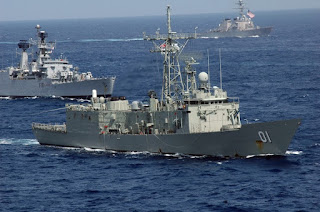Have you ever wondered how does a mobile charger works??? Most of us wouldn't have bothered about it. One need not be an electronics ninja to understand this.
First thing that we need to know about mobile phone chargers is that they are NOT 'chargers' at all!!!!!! They just serve as a power source to the charging circuitry that is contained within your mobile phone.
It can be divided into four stages namely
1. Step-down transformer
2. Bridge rectifier
3. Filter circuit
4. Voltage regulator (IC 7805)
STEP-DOWN TRANSFORMER
As the name suggests a step-down transformer 'steps down' the 220 V AC supply to 9 V AC. This is achieved by having lower number of coils in the secondary than in primary. As simple as that!!! Shown below is the image of an 9-0-9 centre-tapped step-down transformer.
RECTIFICATION
Rectification is the process of removing the negative half-cycle of AC & the device that does this is called a rectifier. A rectifier is usually made of uni-directional device called diodes. The diodes gets reverse biased during the negative half-cycle of the AC supply & since they don't conduct at reverse bias condition the negative half-cycle is converted into a positive one. Mobile chargers use a combination of four diodes (in the form of a bridge) to achieve rectification.
FILTER CIRCUIT STAGE
The output of bridge rectifier is actually not a proper DC waveform but an pulsating one. It is a partial DC that 'oscillates' just like an AC. So in order to make it truly a DC, we use capacitors to smoothen these oscillations & to remove ripples. Capacitors charge themselves what the waveform goes up & drains into the load (in this case the charging circuitry in the cell phone) when the waveform goes low. Thus it maintains the supply voltage at an almost constant value (i.e., DC output)
VOLTAGE REGULATION
This is the final stage of the charger circuit. IC 7805 is usually used as regulator that provides a steady 'regulated' 5 V DC. A capacitor is connected to the output of IC 7805 to eliminate noise. Shown below is an IC 7805 & its input-output waveform.
And finally this steady DC output of IC 7805 is fed to the batteries of our cell phones for 'charging'.
Thats all about mobile phone chargers





































